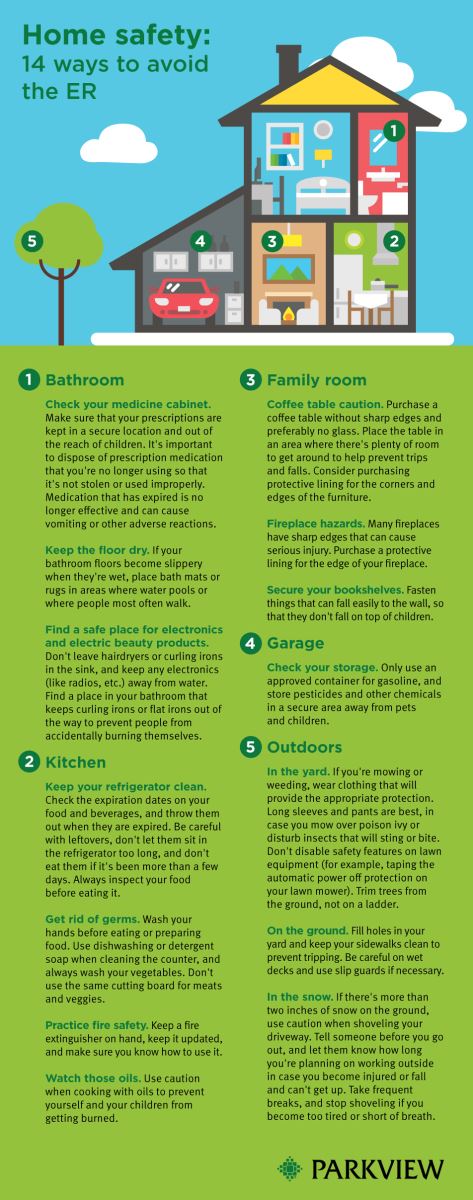Going to the Emergency Department is never on your to-do list. As summer turns into fall and we're busy preparing our homes for winter and the upcoming holidays, it's a great time to fix some common home safety mistakes, and save ourselves from an unexpected trip to the ER. Thomas Gutwein, MD, medical director, Emergency Medicine, spoke on the PBS39 talk show HealthLine to discuss safety measures everyone can take around the house.

Bathroom
Check your medicine cabinet. Make sure that your prescriptions are kept in a secure location and out of the reach of children. It's important to dispose of prescription medication that you're no longer using so that it's not stolen or used improperly. Medication that has expired is no longer effective and can cause vomiting or other adverse reactions.
Keep the floor dry. If your bathroom floors become slippery when they're wet, place bath mats or rugs in areas where water pools or where people most often walk.
Find a safe place for electronics and electric beauty products. Don't leave hairdryers or curling irons in the sink, and keep any electronics (like radios, etc.) away from water. Find a place in your bathroom that keeps curling irons or flat irons out of the way to prevent people from accidentally burning themselves.
Kitchen
Keep your refrigerator clean. Check the expiration dates on your food and beverages, and throw them out when they are expired. Be careful with leftovers, don't let them sit in the refrigerator too long, and don't eat them if it's been more than a few days. Always inspect your food before eating it.
Get rid of germs. Wash your hands before eating or preparing food. Use dishwashing or detergent soap when cleaning the counter, and always wash your vegetables. Don't use the same cutting board for meats and veggies.
Practice fire safety. Keep a fire extinguisher on hand, keep it updated, and make sure you know how to use it.
Watch those oils. Use caution when cooking with oils to prevent yourself and your children from getting burned.
Family room
Coffee table caution. Purchase a coffee table without sharp edges and preferably no glass. Place the table in an area where there's plenty of room to get around to help prevent trips and falls. Consider purchasing protective lining for the corners and edges of the furniture.
Fireplace hazards. Many fireplaces have sharp edges that can cause serious injury. Purchase a protective lining for the edge of your fireplace.
Secure your bookshelves. Fasten things that can fall easily to the wall, so that they don't fall on top of children.
Garage
Check your storage. Only use an approved container for gasoline, and store pesticides and other chemicals in a secure area away from pets and children.
Outdoors
In the yard. If you're mowing or weeding, wear clothing that will provide the appropriate protection. Long sleeves and pants are best, in case you mow over poison ivy or disturb insects that will sting or bite. Don't disable safety features on lawn equipment (for example, taping the automatic power off protection on your lawn mower). Trim trees from the ground, not on a ladder.
On the ground. Fill holes in your yard and keep your sidewalks clean to prevent tripping. Be careful on wet decks and use slip guards if necessary.
In the snow. If there's more than two inches of snow on the ground, use caution when shoveling your driveway. Tell someone before you go out, and let them know how long you're planning on working outside in case you become injured or fall and can't get up. Take frequent breaks, and stop shoveling if you become too tired or short of breath.
In general, most non-life-threatening injuries can be taken care of at an urgent care facility rather than at the Emergency Department. If you are experiencing chest pain, difficulty breathing or shortness of breath, have lost function or mobility of any of your limbs, or have any major lacerations, go directly to your closest Emergency Department. If you can walk and talk and are able to take medications, visit an urgent care center first.



